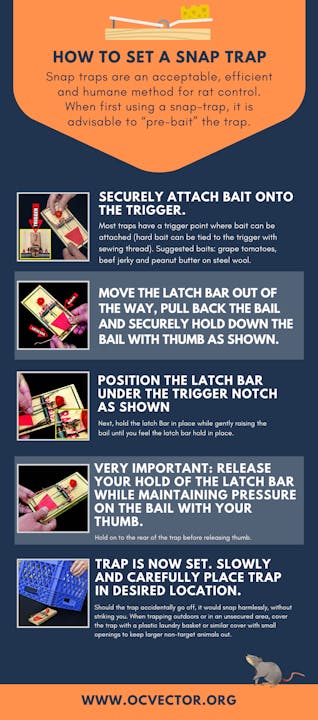Trapping rats
Rat traps may be use in the yard and inside buildings with good results. Wood snap traps are inexpensive, give positive results, and eliminate the possibility of a poisoned rat dying in an inaccessible area. Rat carcasses within a structure can cause serious odor and fly problems.
- Several traps may be set at once for maximum effectiveness.
- For best results, try several different baits to see which is accepted most frequently by rodents. If fresh food is abundant for the rodents, use a bait somewhat different than what is available to them.
- These baits should be kept in fresh condition for best results and should be securely fastened to the trigger.
- Traps should be placed along known rat runways such as fence tops and walls, where rat activity is evident. Securely anchor traps to an immovable object to keep any trapped animals at the placement site.
Proper disposal of rat carcass
Using a plastic bag, place your hand in the bag like a glove, pick up the carcass with the bag, invert the bag or turn bag inside out, tie a knot at the end of the bag, and dispose of rat in a trash container with a secure lid.

